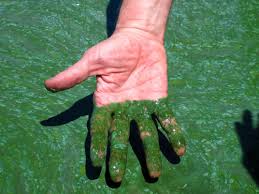
INDIANA – Swimmers and boaters should be careful to avoid high levels of blue-green algae in recreational waters during this time of year.
To protect Hoosier health, the Indiana Department of Environmental Management sample the Department of Natural Resources beaches weekly and provides updates on blue-green algae levels around the state.
Blue-green algae, also known as cyanobacteria, are a group of photosynthetic bacteria found in lakes and slow-moving streams. Increased phosphorus and nitrogen (nutrients) from fertilizers, warm weather, and low turbulence cause them to “bloom” in large numbers. Phosphorus is particularly important in fueling their growth.
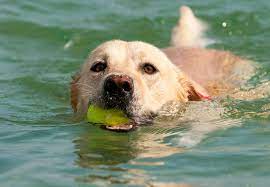
When blue-green algae grow unchecked in lakes, they may interfere with recreation in and on the water. Some blue-green algal strains produce toxins, threatening human and animal health. In extremely rare instances, toxin-producing blue-green algae have resulted in the sickness or death of animals, including livestock and particularly dogs.
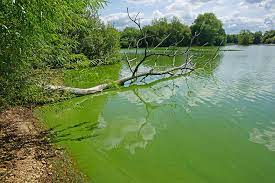
When algal blooms die off, they sink to the bottom. The degradation of this organic matter consumes available oxygen in the water. This depletion of oxygen may be great enough to result in fish kills.
Some blue-green algae blooms can create an earthy or musty smell in lakes and reservoirs. In some cases, taste and odor from algal blooms can impair drinking water supplies that use a surface water source. Taste and odor compounds are not harmful and treated water is safe to drink.
Reservoir and Lake Sampling and Test Results
IDEM, along with the Indiana Department of Natural Resources (DNR), the Indiana State Department of Health (ISDH), and the Board of Animal Health (BOAH) are working together to provide information about blue-green algae in our lakes. IDEM samples selected swimming areas at some state parks and state recreation areas for blue-green algae and toxins between Memorial Day and Labor Day. IDEM scientists take water samples, identify and count blue-green algae, and analyze for four algal toxins: microcystins (most common), cylindrospermopsin, saxitoxin and anatoxin-a.
The weekly results are on the Indiana Reservoir and Lake Sampling Update.
DNR Beach Advisories
The DNR advises the public of the blue-green algae threat through signs at the swimming areas and on the DNR website for the properties being sampled. The Indiana State Parks Advisories and Closings page has the full list of these facilities.
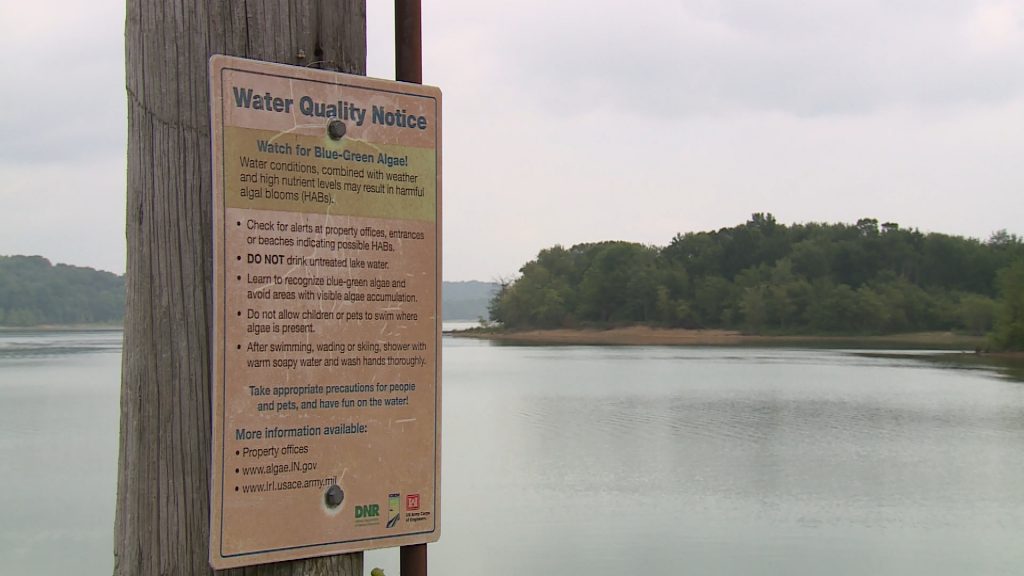
Since the presence of harmful algae isn’t always obvious and the effect of coming in contact with it is different for everyone, it is best to pay close attention to these signs. Just like everyone has different sensitivity to poison ivy, your response to blue-green algae is not predictable.
If you are recreating in a lake or other waterbody, don’t ingest the water, avoid contact with visible algae or algal scums, and shower or bathe with warm, soapy water when you are finished. If you think you are ill from contact, you need to contact your doctor for assistance and to report a human illness.
Hazards to Pets and Livestock
Veterinarians recommend not allowing pets and livestock to drink or swim in waters affected by algae. If in doubt, KEEP YOUR ANIMALS OUT. Dogs are particularly susceptible to blue-green algae poisoning. If you think your animal is ill from contact, this is an emergency so call your veterinarian immediately. Details on what symptoms to track are provided on the BOAH Blue-Green Algae site.
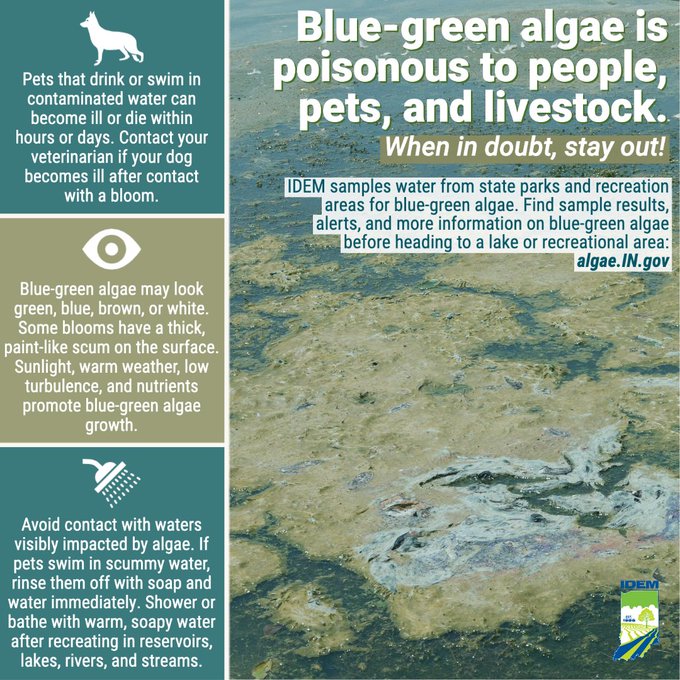
Ways to Help Reduce Blue-Green Algae
Many ways exist to reduce or stop nutrient inputs into our waterways.
Here are some simple things we can do right in our own backyards:
- Most established lawns do NOT need phosphorus to be healthy. If applying fertilizer, use a phosphorus-free lawn fertilizer. This is critical if you live on a lake. Lawn-fertilizer packaging is labeled with three (3) numbers for nutrient content. A zero (0) as the middle number (phosphorus content) indicates a phosphorus-free fertilizer.
- Do not over fertilize in your garden. Check soil nutrient levels prior to applying garden fertilizer to ensure correct application. Soil test kits can be purchased from some local hardware stores and through online distributors.
- Do not fertilize up to the edge of a waterway. Check with your local government for any specific setback requirements.
- Do not dispose of grass clippings or leaves in or near a waterway.
- To prevent inputs from human waste, have your septic system inspected and tank pumped out at least every two years.
- If conducting land disturbing activity, prevent soil and organic matter from washing into waterways, as soil can carry nutrients into the waterway.



